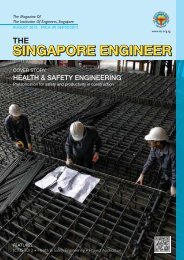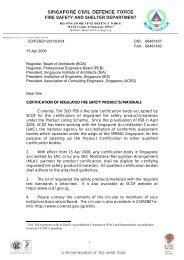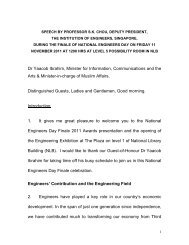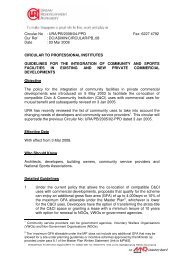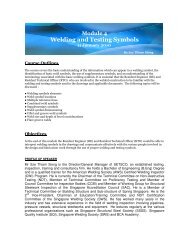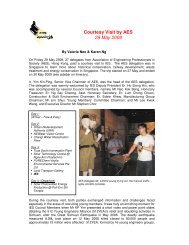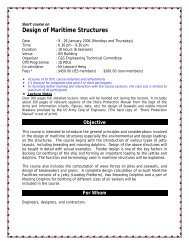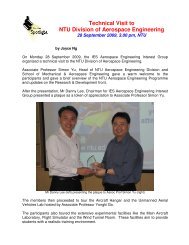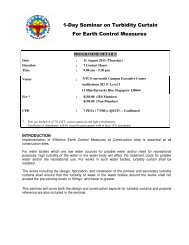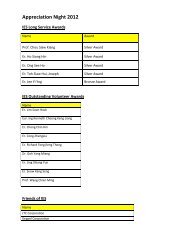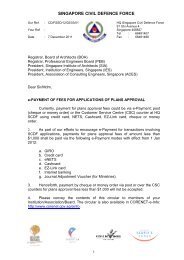singapore engineer singapore engineer singapore engineer
singapore engineer singapore engineer singapore engineer
singapore engineer singapore engineer singapore engineer
Create successful ePaper yourself
Turn your PDF publications into a flip-book with our unique Google optimized e-Paper software.
NEWS<br />
The National Stadium and the Singapore Indoor Stadium.<br />
located more than half of the stadium seats within the lower tier<br />
bowl, with 30,000 seats located in retractable seating modules<br />
that can be moved 12.5 m closer to the football pitch.<br />
Using its in-house parametric bowl generation software to<br />
complete these optimisation studies, Arup was able to arrive at<br />
a 3D form for the bowl and at the same time study the impact<br />
of reducing the geometry of the stadium roof. The final design<br />
for the bowl made it possible to reduce the long span of the<br />
dome, currently being constructed by Dragages Singapore on<br />
site, to 310 m.<br />
Parametric design: roof architecture and structure<br />
The architectural design and <strong>engineer</strong>ing of the stadium roof<br />
would not have been possible without the use of the latest<br />
3D modelling software. The Arup design team realised that<br />
the successful delivery of the roof structure needed a fully<br />
integrated approach to the architectural and structural design.<br />
To this end, a specialist team within the firm was tasked with<br />
developing bespoke software to manage inputs from the various<br />
design software used in the design process. An iterative process<br />
was required as inputs from different software took the roof<br />
through a range of design processes, from geometry generation<br />
to structural analysis.<br />
The different members of the Arup design team wanted a<br />
feedback loop, so that one software could inform another of<br />
defined positions, co-ordinates and dimensions for the roof<br />
elements. And so from the outset, a common interface was<br />
established, to allow the parametric intelligence established in<br />
Digital Project, Rhinoceros or Oasys GSA to be transferred<br />
from one software to another. Through this integrated design<br />
approach, a set of shared parameters was established, that would<br />
govern the roof structure and influence the visible architecture.<br />
The initial target was to reduce steel weight by leveraging the<br />
inherent efficiencies of the shell roof form. One of the outcomes<br />
of this was the reduction in the depth of the primary structure<br />
as it came to ground. Two control surfaces were established to<br />
The interiors of corporate suites.<br />
Parametric model of the stadium roof. Image by Arup.<br />
44 THE SINGAPORE ENGINEER October 2012



